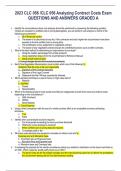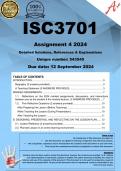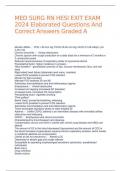Exam (elaborations)
MCBM 1- (6) Enzyme, Kinetics, and Regulation with Complete Questions and Answers 100% Correct
- Course
- Institution
MCBM 1- (6) Enzyme, Kinetics, and Regulation with Complete Questions and Answers 100% CorrectMCBM 1- (6) Enzyme, Kinetics, and Regulation with Complete Questions and Answers 100% CorrectMCBM 1- (6) Enzyme, Kinetics, and Regulation with Complete Questions and Answers 100% CorrectMCBM 1- (6) Enzyme, ...
[Show more]












